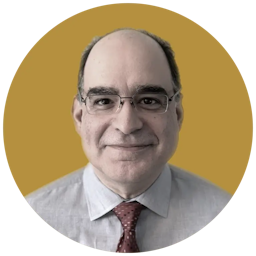As Greater New York City Turns 125, Will the Union of Five Boroughs Endure?
Although some Brooklynites still call consolidation ‘the Great Mistake,’ cries for independence today are loudest in Staten Island.

With the arrival of 2023, the City of New York is embarking on its 126th year as five boroughs with their fates coupled together like subway cars. But as crime, ballooning deficits, and financial challenges grip Gotham, are those opposing the marriage of January 1, 1898, back in style?
On March 27, 1896, the Sun reported that the bill on consolidation of the city had passed under the headline “Greater New York Now” on the front page. The vote, the editors wrote, was bipartisan, but the paper quoted one opponent — an Allegheny County Republican, Frederick A. Robbins — who said rural representatives had “cut their own throats.”
“It has been said,” Robbins told the legislature, “that the names of those who vote for this bill will go down in history. But I claim that the men who vote against this measure and refuse to sanction this gigantic wrong will be esteemed and known as heroes.”
Many in Brooklyn, called “the City of Churches,” objected to the merger, seeking to preserve the city’s Protestant identity. However, in 1897, the Sun reported that Brooklyn’s mayor, Frederick W. Wuster, a Republican, “had not hesitated to sign the charter on account of the fiscal advantages which would accrue to Brooklyn under its provisions.”
Unifying Manhattan and the Bronx with Brooklyn, Queens, and Staten Island — which legend says New York won from New Jersey in a boat race — may seem a kind of municipal Manifest Destiny, but it took Andrew Haswell Green to make it happen.
Green helped create Central Park and — according to Esther Crain at Ephemeral New York — we owe him for such sites as the New York Public Library, Metropolitan Museum of Art, Museum of Natural History, and Central Park Zoo. His 1868 “proposal to consolidate the city, however, was a harder sell,” Ms. Crain wrote. “Nicknamed ‘Green’s Hobby,’ the idea of combining Manhattan, Brooklyn, and other towns and cities along the city’s port barely gained traction.”
Green, a New York City dreamer, pushed for an “imperial city” despite objections. Most of the resistance came from Brooklynites who enjoyed their independence, and to this day refer to themselves as citizens of — as the sign made famous by the opening credits of 1970’s sitcom “Welcome Back, Kotter” boasts — “Brooklyn: The Fourth Largest City in America.”
Other relics of this independence remain. The Brooklyn baseball team took the name “Trolley Dodgers“ in 1911, referring to the local transport system, leaving representation of New York to others. Had the city maintained its independence, perhaps “Dem Bums” wouldn’t have decamped for Los Angeles in 1957, but we’ll never know.
Another concession to the Brooklyn identity is the legendary span linking it to Manhattan. The original names — the New York and Brooklyn Bridge and East River Bridge — was set in stone as the Brooklyn Bridge in 1915. Despite the city’s troubles, that borough’s identity seems as resilient as the Ghetto Palm of Francie Nolan’s “A Tree Grows in Brooklyn.”
Although some Brooklynites still call consolidation “the Great Mistake,” cries for independence today are loudest in Staten Island. Last May, a Republican member of the City Council, Joe Borelli, introduced a bill to create “a task force to study and report on the feasibility of an independent city of Staten Island,” which remains an outpost of Republicanism in a city Democrats dominate as much as they did the Tammany Hall machine in the Gilded Age.
If the prediction of Robbins that history would remember opponents of Greater New York as heroes has not yet proven correct, it might comfort him that Green has also faded into obscurity, this despite the exciting story of him getting gunned down in 1903 at his Park Avenue home — a Terminator-style case of mistaken identity.
The Sun eulogized Green as “the Father of Greater New York” in a story headlined, “Mr. Green, The Good Citizen,” a fitting epitaph for the man who created the metropolis that Duke Ellington called “the capital of everything.”
Whether Greater New York delivers the vision and good citizenship required to solve today’s challenges will determine if it endures another 125 years, or if Gilded Age citizens who opposed its birth one day get their wish.

